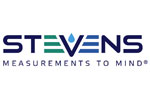Stevens HydraProbe Soil Moisture Sensors
Features
- Instantaneous sensor response with no calibration requirements
- Compact, rugged, zero-maintenance design for long-term deployments
- Easy integration with NexSens data logging & telemetry products
- Free ground shipping
- Expedited repair and warranty service
- Lifetime technical support
- More
Overview
The Stevens Hydraprobe measures 21 different soil parameters simultaneously. The HydraProbe instantly calculates soil moisture, electrical conductivity, salinity, and temperature and supplies raw voltages and complex permittivity for research applications. A compact, rugged design with potted internal components makes the HydraProbe easy to deploy and leave in the soil for years without maintenance.
Electrical Response Parameters
The Stevens HydraProbe design is unique compared to other soil moisture probes because the electrical response of soils can be specified by two parameters - the dielectric constant and the conductivity. The dielectric constant is most indicative of water content, while the conductivity is strongly dependent on soil salinity. Unlike other capacitance-type sensors, the HydraProbe measures both of these components simultaneously. The high-frequency electrical measurements indicating the capacitive and conductive properties of soil are then directly related to the soil's moisture and salinity content, while a thermistor determines soil temperature.
Remote Capabilities
The HydraProbe soil moisture sensor includes SDI-12 or RS-485 outputs for interfacing with external data loggers such as the NexSens X3. Sensor cables can be factory-connected with NexSens UW plug connectors for integration to an X3 data logger sensor port. Data retrieval options using the X3 include direct-connect, Wi-Fi, cellular, and Iridium satellite telemetry.
In The News
Sargassum Surge: How Seaweed is Transforming our Oceans and Coastal Ecosystems
Until recently, Sargassum –a free-floating seaweed–was distributed throughout the Sargasso Sea , the north Caribbean Sea, and the Gulf of Mexico. But in the space of a decade, this seaweed has, as one scientist remarks , “Gone from a nonfactor to the source of a terrible crisis.” Driven by climate change, anomalous North Atlantic Oscillation in 2009-2010 and a glut of anthropogenic pollutants, sargassum has proliferated. Seasonally recurrent mats as deep as 7m now bloom in the “Great Atlantic Sargassum Belt” (GASB), which covers areas of the Atlantic from West Africa to the Caribbean Sea and Gulf of Mexico. Every year, millions of tons wash up along the shores of more than 30 countries . Dr.
Read MoreGreat Lakes Research Center: Designing Targeted Monitoring Solutions
According to the National Oceanic and Atmospheric Administration ( NOAA ), the Great Lakes have more miles of coastline than the contiguous Atlantic and Pacific coasts combined and contain 20 percent of the world's freshwater, making it a critical region to protect and conserve. Continuous monitoring and data-informed resource management are key components of managing waters in the region. Hayden Henderson, a research engineer with the Great Lakes Research Center (GLRC), designs and deploys monitoring platforms throughout the Great Lakes. With a background in environmental engineering, Henderson enjoyed the challenge of creating systems and making them work to obtain difficult, remote measurements.
Read MoreMonitoring Meadowbrook Creek: Real-Time Data Collection in an Urban Creek
Meadowbrook Creek in Syracuse, New York, has been monitored by Syracuse University (SU) faculty and students for over a decade. Originally established by Dr. Laura Lautz in 2012, the early years of the program focused on collecting grab water samples for laboratory analysis and evaluating the impact of urban land use, human activities, and natural processes on water resources. Tao Wen , an Assistant Professor in SU’s Department of Earth and Environmental Sciences, took over the program in 2020 and upgraded the existing systems to include 4G modems that allowed for real-time data viewing. [caption id="attachment_39339" align="alignnone" width="940"] An overview of the Fellows Ave monitoring station along Meadowbrook Creek.
Read More















